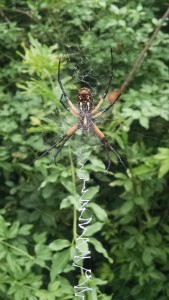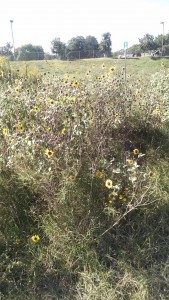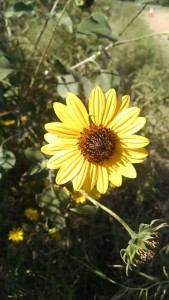 When I was volunteering at a bird observatory during my undergrad years, blue jay was one of birds that we had to be extremely careful when we band them. Because they bite (yes, bite) really hard, we have to be sure that none of our hands, hair, or even a piece of shirt are somewhere near their beaks. Comparing to others, though, blue jays often were more calm. As All About Birds state: blue jays are aggressive birds but are far less aggressive than other species like mockingbirds, northern cardinals, doves and even squirrels.
When I was volunteering at a bird observatory during my undergrad years, blue jay was one of birds that we had to be extremely careful when we band them. Because they bite (yes, bite) really hard, we have to be sure that none of our hands, hair, or even a piece of shirt are somewhere near their beaks. Comparing to others, though, blue jays often were more calm. As All About Birds state: blue jays are aggressive birds but are far less aggressive than other species like mockingbirds, northern cardinals, doves and even squirrels.
Blue jays can be found in edge of forest, cities, groves or suburban gardens and they would eat from nuts and seeds to insects. Blue jay sometime eat other birds’ eggs but that is big part of its diet. Blue jays also store their food in the spot in their throat for later.


Blue jays are uncommon west of Rockies, and if you saw a bird that look a lot like blue jay – it is likely that you’ve spotted a western scrub jay or Steller’s Jay, a jay that share same genus as blue jay – Cyanocitta (‘cyano’ kind of gives it away). Both jays are found west of Rockies, only.
Fun fact: Blue jay is blue. But really, they are brown. What is this? Blue/black or white/gold dress debate, again? No, really. Blue jay’s blue feathers’ pigments are melanin (pigments found in our skin), which are brown. Their feathers appears blue instead of brown because of modified cells on the surface of feather barbs scatter light, making feathers blue instead of brown. Makes you reconsider the dress debate, doesn’t it?
Surprisingly, even though blue jays are common, there are not much information on their migration pattern. They don’t have consistent pattern like other birds – some blue jay will migrate when they are juveniles while other would stay in same area year round then migrate and stay there for a year round before migrating back. Some doesn’t migrate at all.
My iNaturalist observation can be found here.
http://animals.nationalgeographic.com/animals/birds/blue-jay/
http://www.audubon.org/field-guide/bird/blue-jay
https://www.allaboutbirds.org/guide/Blue_Jay/lifehistory
Pictures:














